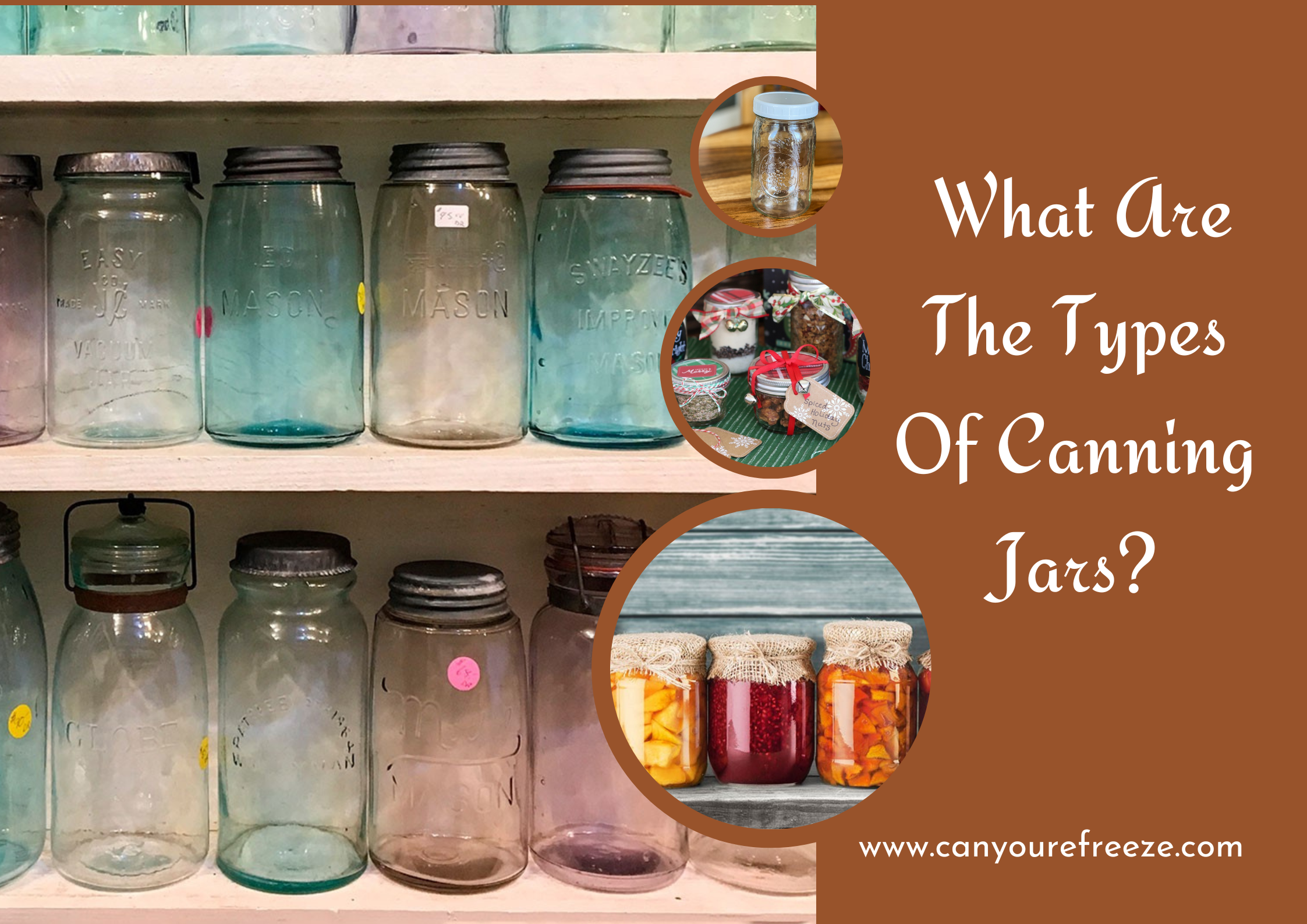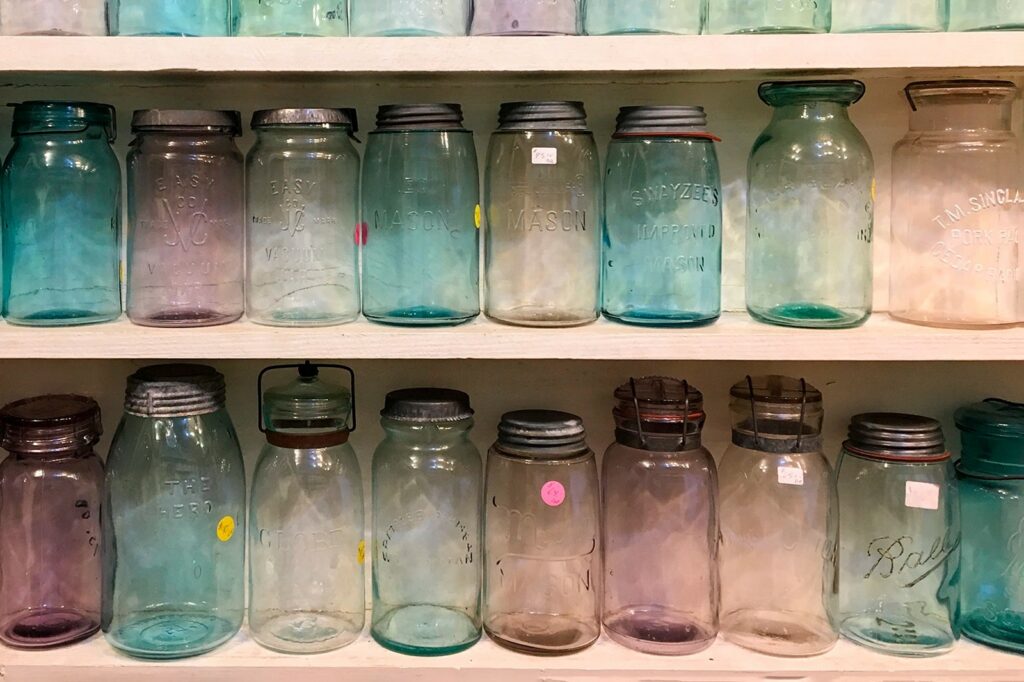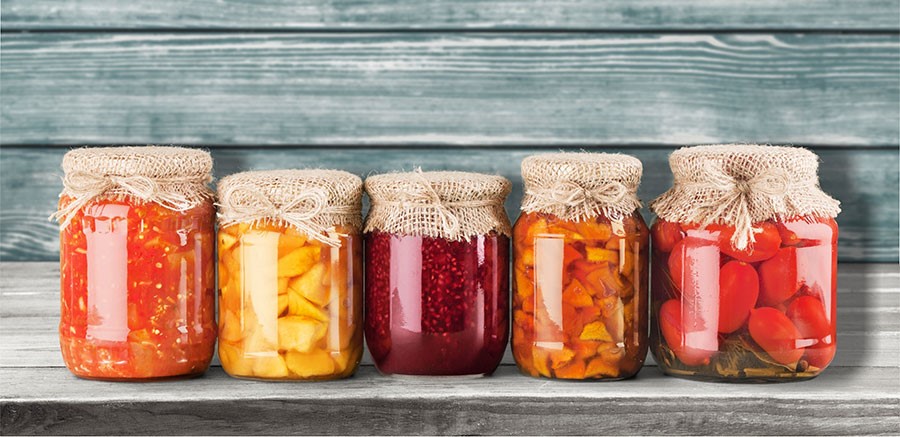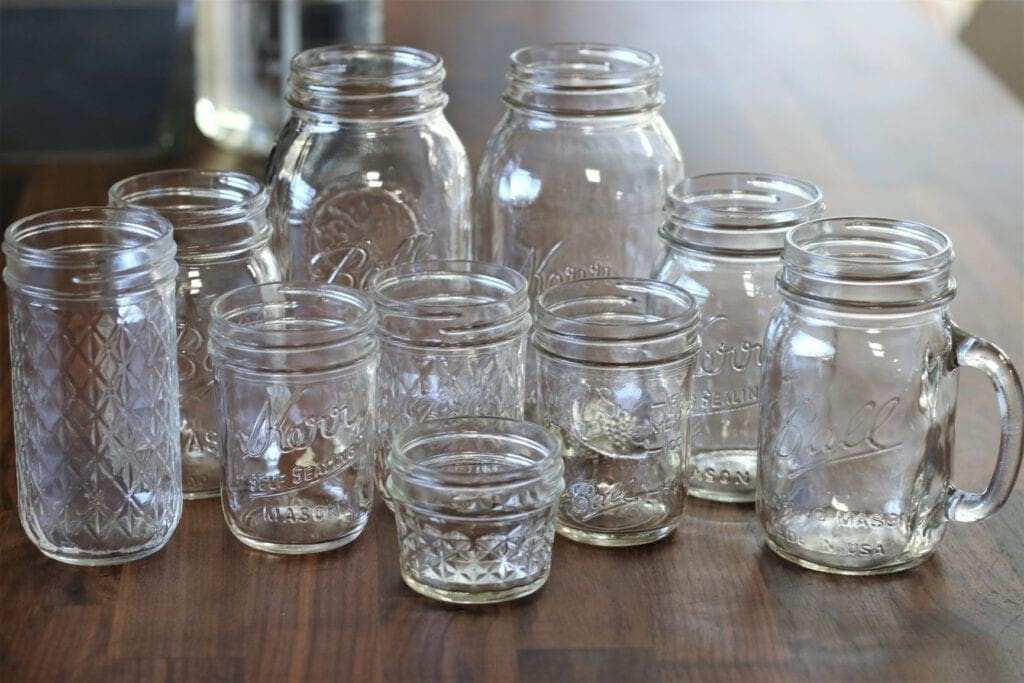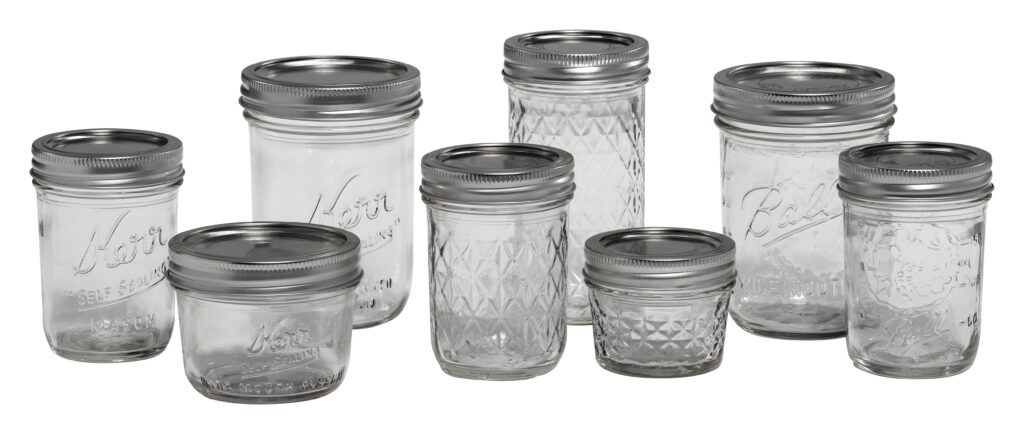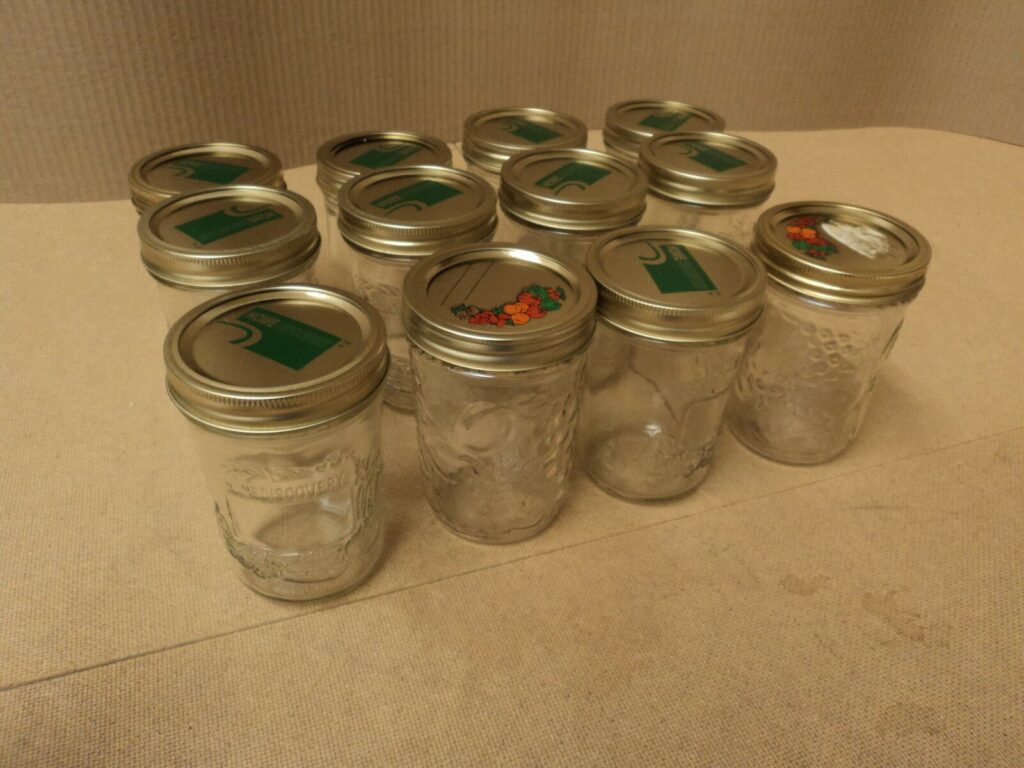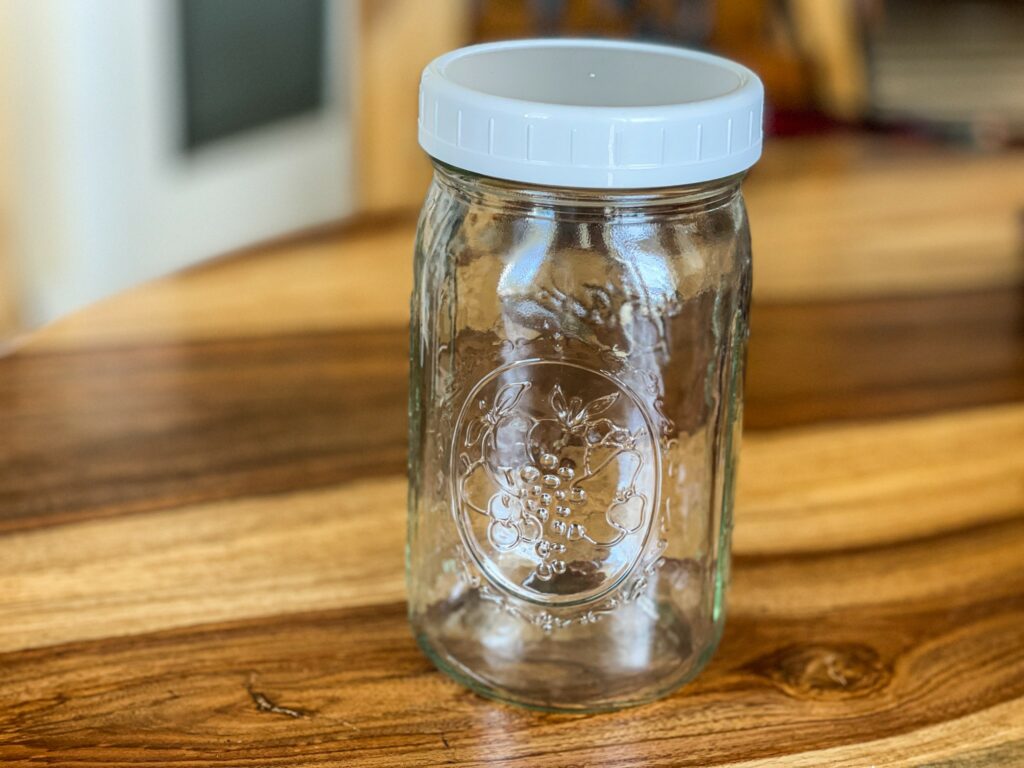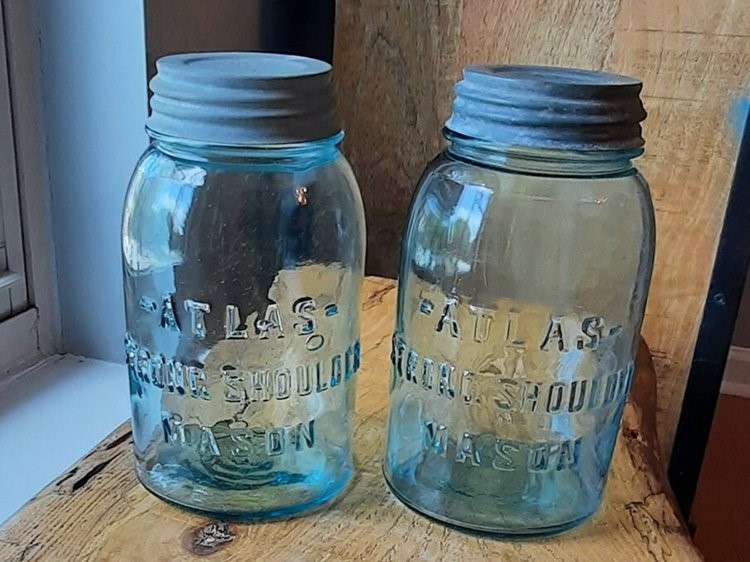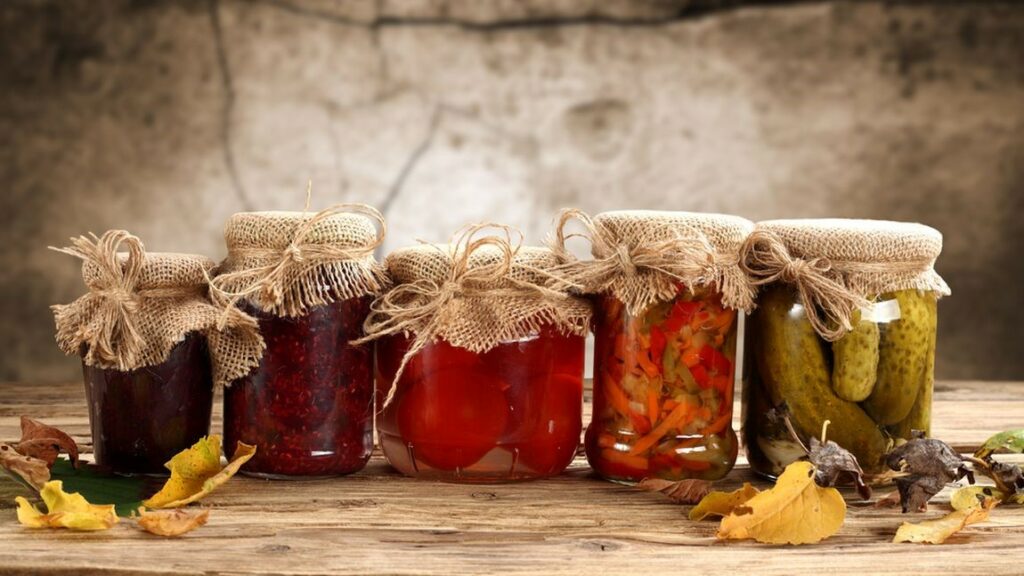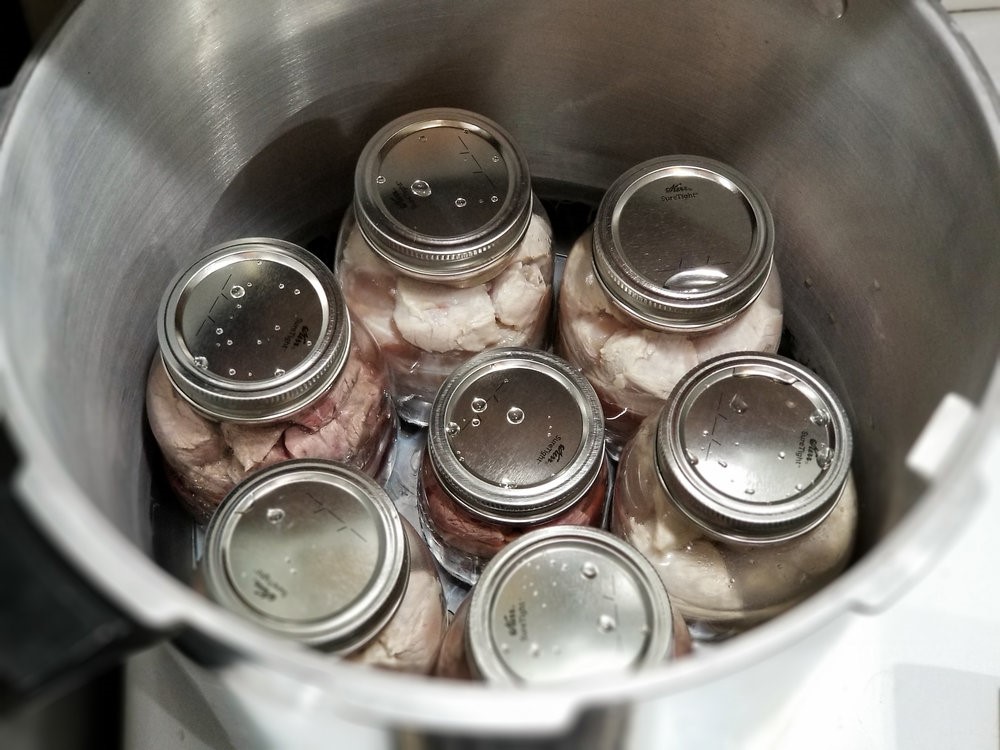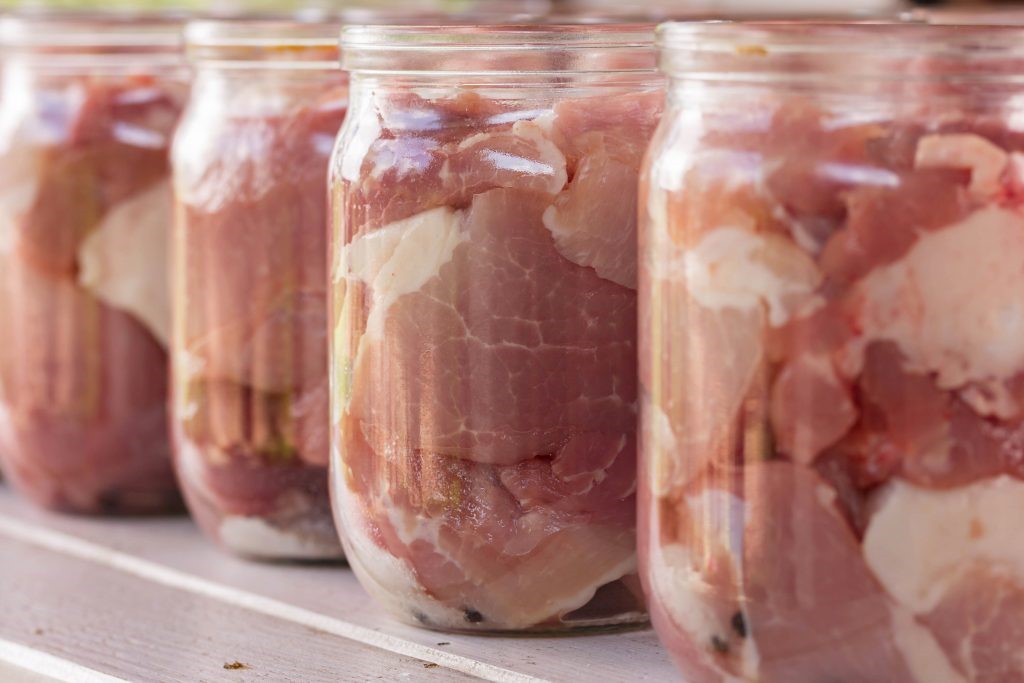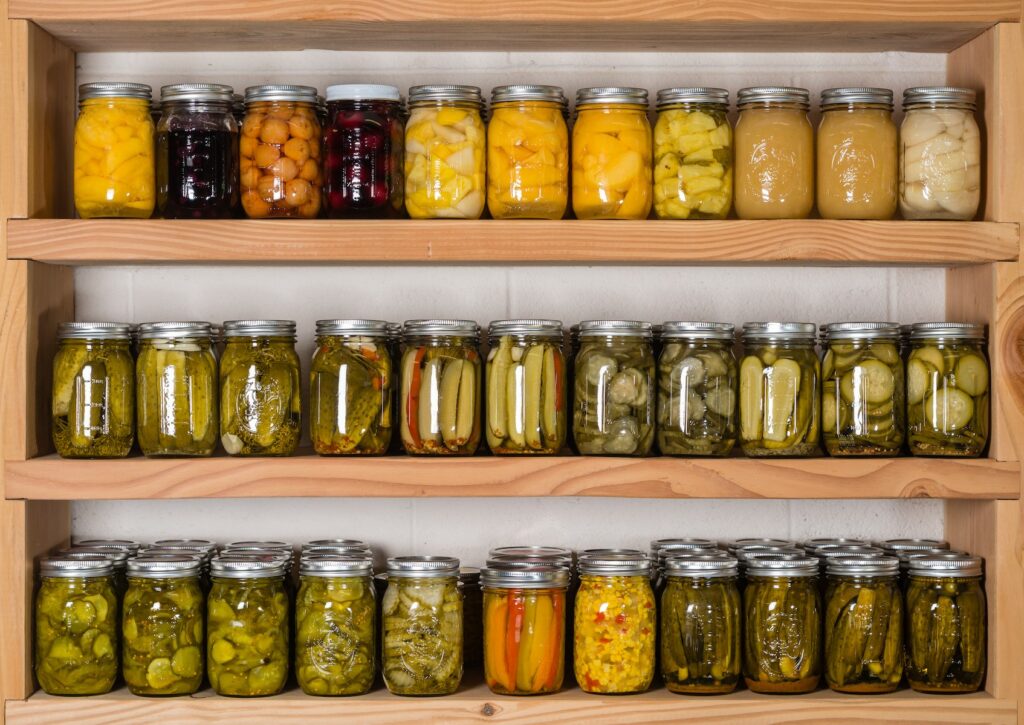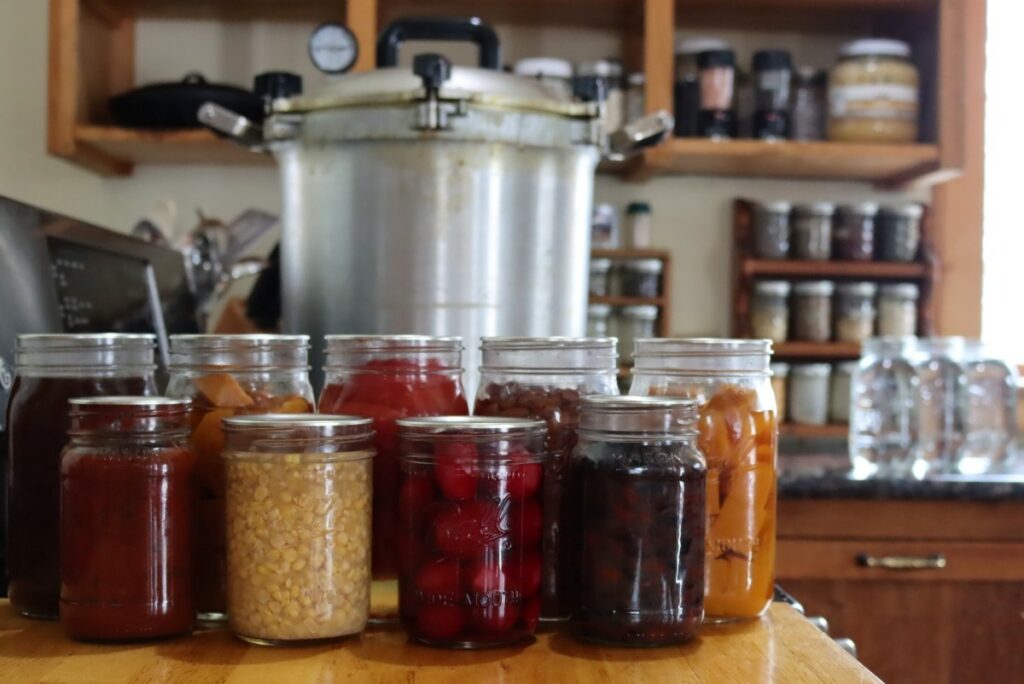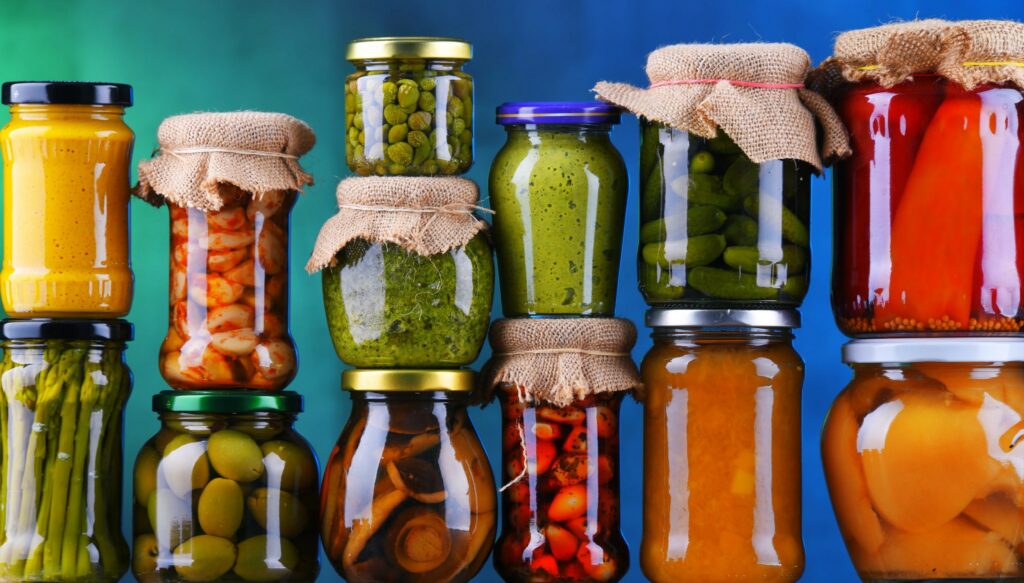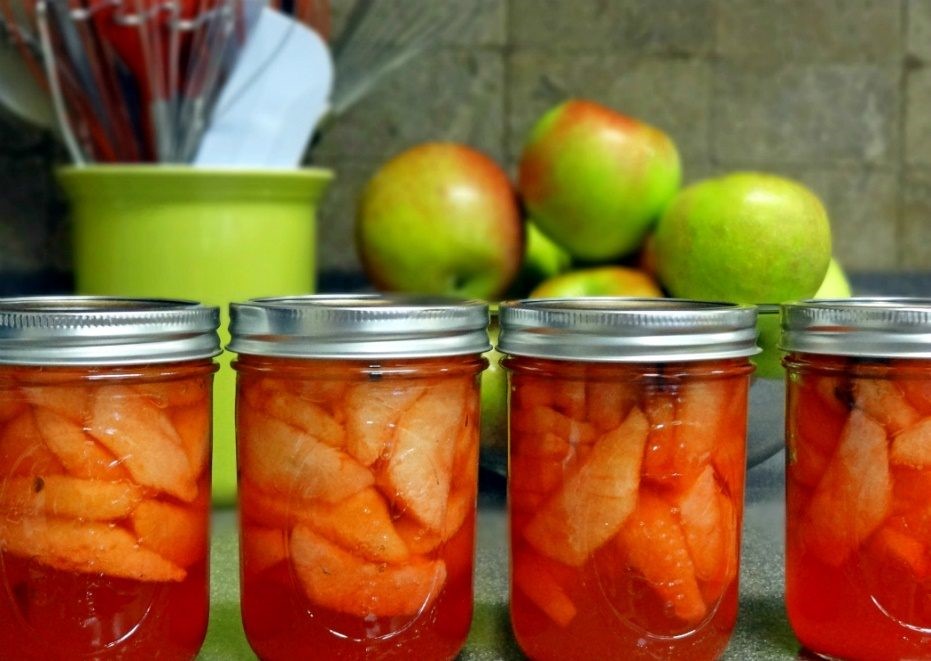What Is Canning?
Canning is a food preservation technique that is used to store food in jars for longer periods. The process of canning is most widely used to preserve fruits and vegetables effectively for later use. You can also store meats, seafood, jams, jellies, and more recipes in jars by canning.
The process of canning includes boiling food in jars at high temperatures for some time, which pushes air from the canning jar and creates a vacuum seal inside the jar. This further kills bacteria and other microorganisms, that could otherwise cause food spoilage.
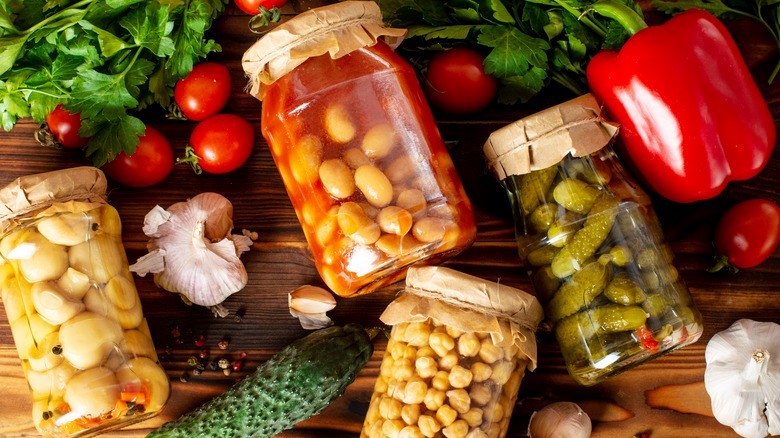
Water bath canning and pressure canning are the most popular home canning methods for food preservation in jars. However, for canning, you need proper equipment because without them the process will not be completed.
Which Jars Are Ideal For Canning?
The market offers many varieties of jars- they vary in size and shape. Some jars have wide mouths, while others are narrow. The jars also vary in size from 4 ounces to 32 ounces and more. They are most commonly referred to as pint-size jars, quart jars, or half-pint jars.
Now, if you are to decide which jars are ideal for canning, it solely depends on the type of food you are preserving. Different food items need different jars for storage. For example, you can store fruits and vegetables in pint-size jars, whereas you can store meats and seafood in quart jars.
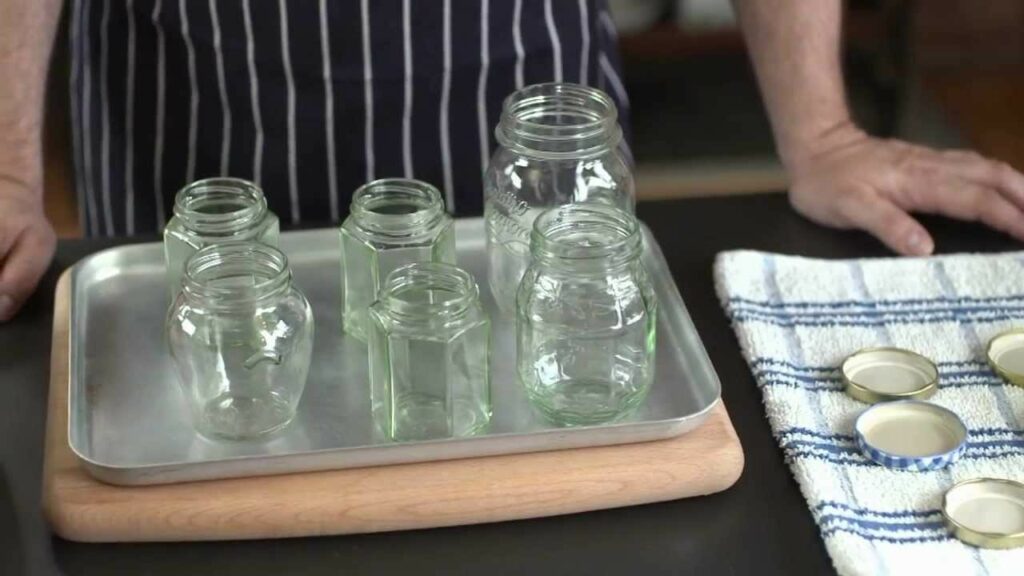
With proper jars for canning, you also need specific lids and bands to seal the jars adequately. Also, make sure not to reuse the jar lids and bands while storing food. You can reuse the jars though after sterilizing them.
Preparing The Canning Equipment
You need specific equipment, especially glass jars that are designed especially for canning, otherwise, the food stored in the jars might get spoiled. Using appropriate equipment will ensure adequate preservation of the foods. Check out the list of canning equipment below.
- Canning jars of different sizes
- Respective lids for the jars
- Metal canning rings or bands for sealing the jars
- Canning pot to process the jars
- Water bath canner or pressure canner
- Ladle and funnel to fill the jars
- A jar lifter or canning jar tongs
Preparing Jars For Canning
Preparing the jars is a very important step in the canning process. The jars need to be adequately cleaned and sterilized before storing any food item in them. To prepare jars for canning, check out the following steps.
- Take hot soapy water in a large pot and place the jars, lids, and bands in it. Let it remain for some time, and then rinse the equipment thoroughly. Drain all the extra water, and place the jars, lids, and bands on a shelf for drying.
- In the meantime, fill the canner with water and place it on the stove to boil. Keep the flame on medium heat, and as soon as you are ready to fill the jars turn down the heat. This will keep the boiling water warm.
- On another saucepan or pot, place the jar lids and the bands, and fill it with hot water. Boil them on low heat until just simmering. Do not completely simmer the equipment. Once it is done, turn off the heat and keep the jar lids and bands warm.
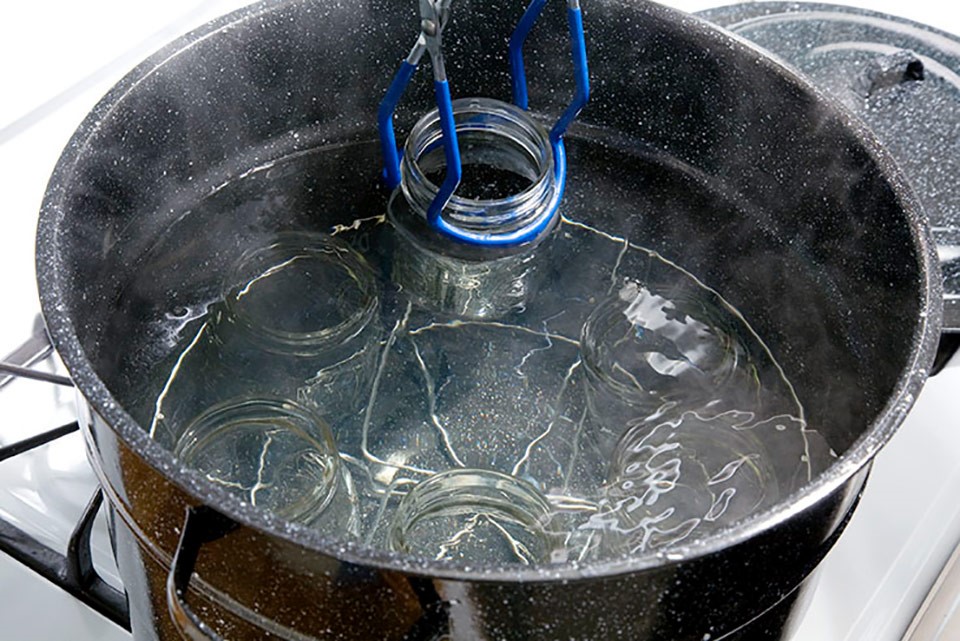
All this is done to sterilize the jars and all the other equipment before canning. The method is best to prepare glass jars for canning, and all of these will take about 25-30 minutes. Clean jars will prevent bacteria and other microorganisms.
Why Is It Important To Sterilize The Jars?
Jars are the main equipment in canning. It is important to sterilize the jars, especially when preserving fruits and vegetables that require less than 10 minutes of processing time in a boiling water canner. This is because sterilized jars are the cleanest and will therefore prevent bacterial or fungal growth on the food.
However, sterilization of the jars is only necessary if you are using the water bath canning method. Sterilizing canning jars is not required in pressure canning. On the other hand, if you are going to process the filled jars in boiling water for more than 10 minutes, it is not necessary to pre-sterilize the jars.
How To Sterilize Canning Jars?
Sterilization is a crucial step in the food preservation process and therefore needs to be done carefully. Also, sterilizing your jars will be ineffective, if your surrounding areas are not clean enough. Clean jars are capable of picking bacteria from the surroundings, therefore, keeping the immediate area neat is vital.

Check out the steps to sterilize the canning jars below.
- Fill a canner or a big pot with water and bring it to a boil.
- Place the empty jars right-side up in the hot water.
- The jars should be completely submerged in the hot water.
- Bring the water to a rolling simmer and set the timer.
- Boil the jars for a minimum of 10 minutes and turn off the heat.
- Use a jar lifter to take out the jars and drain them thoroughly.
The jars are sterilized and can be kept for about an hour before you fill them with food. This is the only possible way to sterilize jars in a water canner. Food experts suggest sterilizing your canning jars this way and avoiding any other method to sterilize the jars.
Also, keep in mind, never sterilize the jars in a dishwasher. That is a big no when it comes to preserving food in the kitchen.
What Happens If You Do Not Sterilize The Jars Before Canning?
As mentioned above, sterilization of the jars is an important step to preserve the food, but not necessary for jars that are boiled in the canner for more than 10 minutes. However, if you do not sterilize the required jars before canning, the food stored is likely to develop bacteria, fungi, or yeast. The food inside will get infected, and thus degrade very quickly.
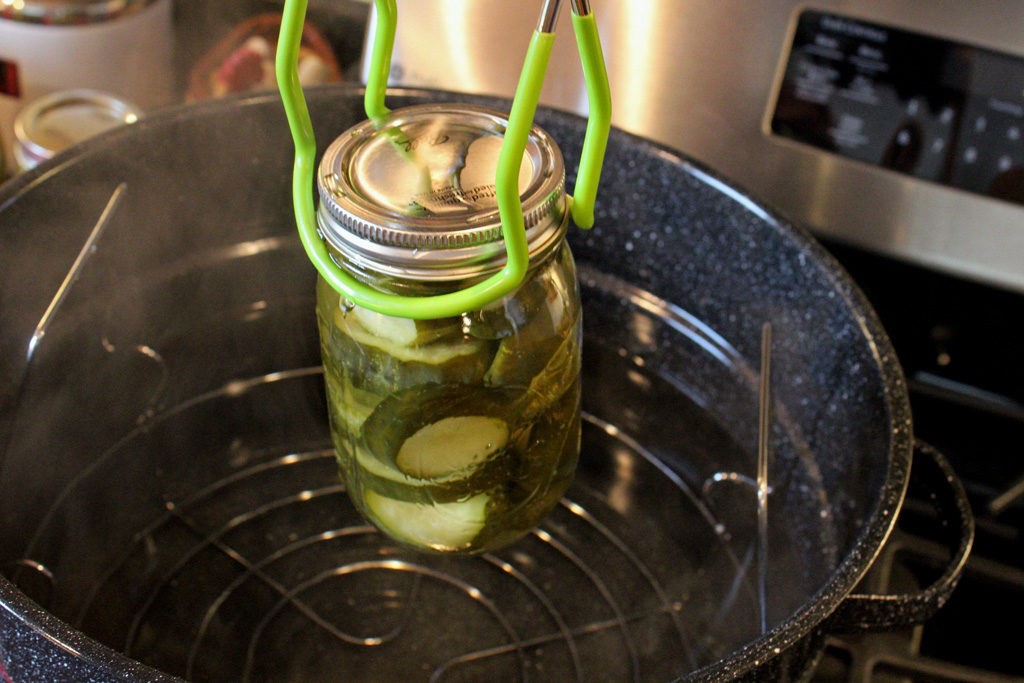
Sterilization is therefore a crucial step in the canning process to keep away bacterial and fungal build-up on the preserved food. You do not need to sterilize the jars on a pressure canning method, because then the jars are sterilized anyway in the canner.
What Is The Water Boiling Process?
The water boiling process or the water bath canning process is a way of food preservation that involves boiling the jars at high temperatures in the canner. You can preserve foods such as fruits, fruit juices, jams, jellies, tomatoes, pie fillings, and more, using this method.
The water boiling process of the jars is the best canning option for beginners, or when you are canning food at home frequently. This also does not take much time and is suitable for 4-8 ounce or 12-ounce jars.
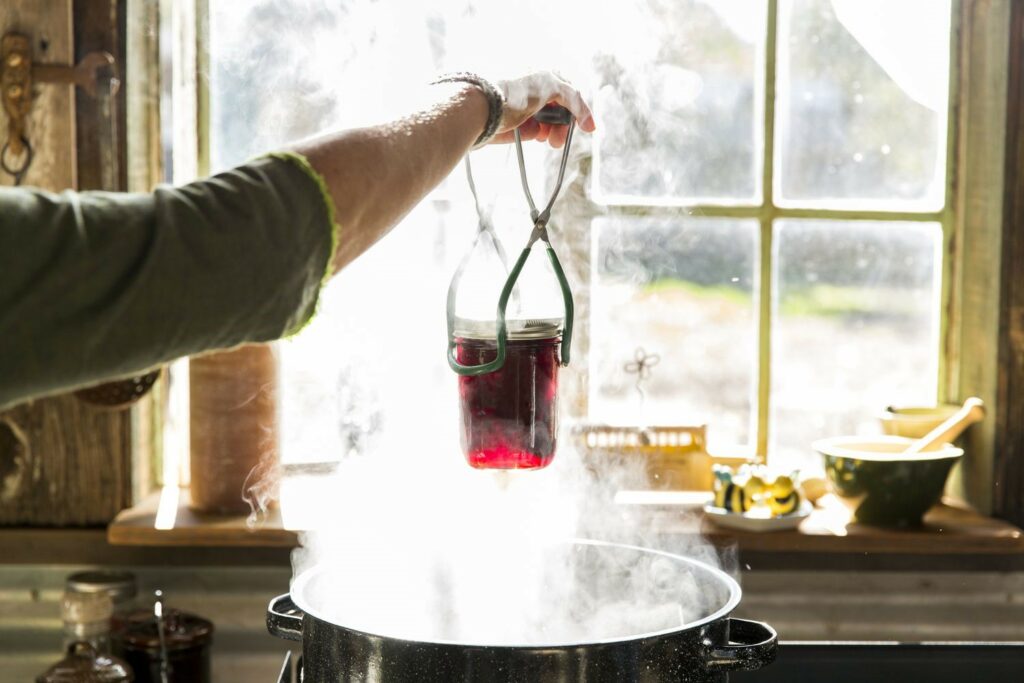
This method is ideal for high-acid foods. The process involves heating filled jars of food in a water bath canner to preserve the food for longer. However, the boiling time of the filled jars in the canner depends on the type of food you are canning.
Summing it up that was all about preparing jars for canning. It is an easy process and is effective for food storage in jars. Now you also know that all the glass jars are not suitable for every type of food, you need specific home canning jars and lids for food storage. Lastly, you can also preserve any cooked recipe using this method.



